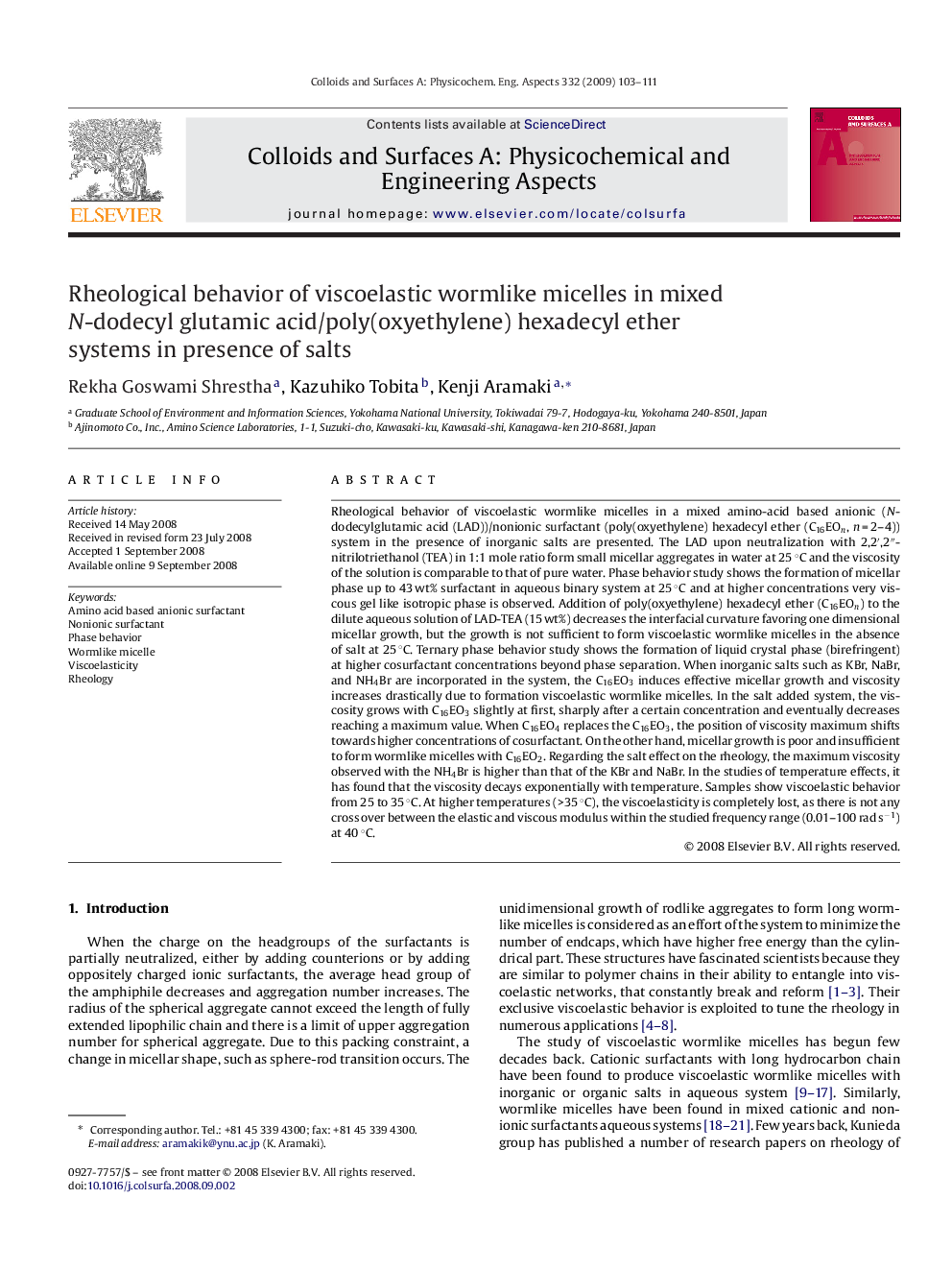| کد مقاله | کد نشریه | سال انتشار | مقاله انگلیسی | نسخه تمام متن |
|---|---|---|---|---|
| 596275 | 1454040 | 2009 | 9 صفحه PDF | دانلود رایگان |

Rheological behavior of viscoelastic wormlike micelles in a mixed amino-acid based anionic (N-dodecylglutamic acid (LAD))/nonionic surfactant (poly(oxyethylene) hexadecyl ether (C16EOn, n = 2–4)) system in the presence of inorganic salts are presented. The LAD upon neutralization with 2,2′,2″-nitrilotriethanol (TEA) in 1:1 mole ratio form small micellar aggregates in water at 25 °C and the viscosity of the solution is comparable to that of pure water. Phase behavior study shows the formation of micellar phase up to 43 wt% surfactant in aqueous binary system at 25 °C and at higher concentrations very viscous gel like isotropic phase is observed. Addition of poly(oxyethylene) hexadecyl ether (C16EOn) to the dilute aqueous solution of LAD-TEA (15 wt%) decreases the interfacial curvature favoring one dimensional micellar growth, but the growth is not sufficient to form viscoelastic wormlike micelles in the absence of salt at 25 °C. Ternary phase behavior study shows the formation of liquid crystal phase (birefringent) at higher cosurfactant concentrations beyond phase separation. When inorganic salts such as KBr, NaBr, and NH4Br are incorporated in the system, the C16EO3 induces effective micellar growth and viscosity increases drastically due to formation viscoelastic wormlike micelles. In the salt added system, the viscosity grows with C16EO3 slightly at first, sharply after a certain concentration and eventually decreases reaching a maximum value. When C16EO4 replaces the C16EO3, the position of viscosity maximum shifts towards higher concentrations of cosurfactant. On the other hand, micellar growth is poor and insufficient to form wormlike micelles with C16EO2. Regarding the salt effect on the rheology, the maximum viscosity observed with the NH4Br is higher than that of the KBr and NaBr. In the studies of temperature effects, it has found that the viscosity decays exponentially with temperature. Samples show viscoelastic behavior from 25 to 35 °C. At higher temperatures (>35 °C), the viscoelasticity is completely lost, as there is not any cross over between the elastic and viscous modulus within the studied frequency range (0.01–100 rad s−1) at 40 °C.
Journal: Colloids and Surfaces A: Physicochemical and Engineering Aspects - Volume 332, Issues 2–3, 15 January 2009, Pages 103–111